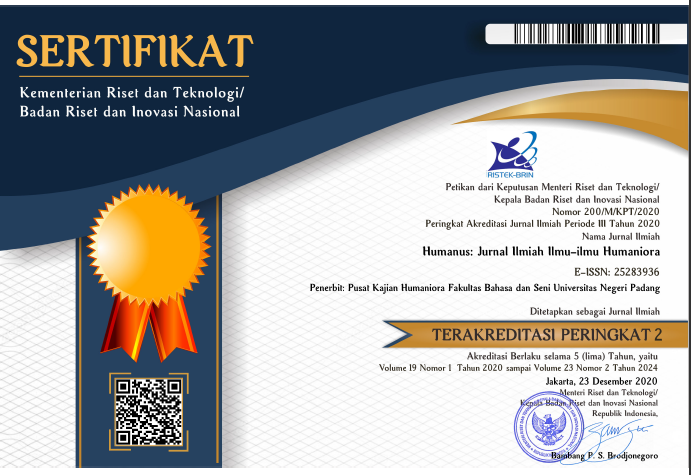KOREOGRAFI DI MALAYSIA DALAM KONSEP MULTIKULTURAL: KAJIAN KASUS PROGRAM MINOR SENI TARI UPSI
 ),
), (1)
 Corresponding Author
Corresponding Author
Copyright (c) 2016 Humanus
DOI : https://doi.org/10.24036/jh.v14i1.5402
Full Text:
 Language : en
Language : en
Abstract
This study used a descriptive method with qualitative approach by studying the library, (library research), observation, and interviews, as well as using the theory of choreography. The research findings prove THAT seventeen works of Minor Dance students have met the elements of choreography as follows: (a) selecting a theme or idea of arrangements through the initial stimuli, ie stimulus ideas, kinesthetic, auditory and visual. (b) exploration and improvisation, (c) smoothing and composition. Elements of composition has also been described, which include: (1) the structure of arrangements; (2) dancers’ motion and passage; (3) the pattern of the floor; (4) music and lighting; (5) costumes and make-ups.The study also found that the students’ eleven dances have applied the concept of multiculturalism in ethnical and classical themes. Multiculturalism is understood as various ethnic diversity and distinctiveness, reflected in the work of each indibiduals that are limited by the historical and social context, as well as local culture, including ethnic Malay, Minangkabau, Javanese, Sabah and Sarawak, Kelantan, India, and China.
Keywords: multiculturalism, dance as Minor Learning, and choreography
Keywords
 Article Metrics
Article Metrics
 Abstract Views : 1616 times
Abstract Views : 1616 times
 PDF Downloaded : 601 times
PDF Downloaded : 601 times
Refbacks
- There are currently no refbacks.
Copyright (c) 2016 Humanus









